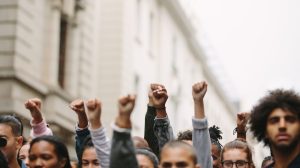Today’s workforce is in a unique position where there are five generations working together, whether it be in-person, remotely or both. And while there are challenges to managing a multigenerational team, there are also opportunities.
The five generations currently in the workforce include:
- Traditionalists (76 to 99 years old)
- Baby Boomers (57 to 75 years old)
- Generation X (41 to 56 years old)
- Millennials (26 to 40 years old)
- Generation Z (25 years old and younger)
Some of the challenges of a multigenerational workforce include employees having different relationships with organizations, authority, work styles, etc. For example, when it comes to working styles, Traditionalists very much follow the rules and only want to fix them if something’s broken. Baby Boomers want a structured organization but will challenge the rules, yet they are cautious about change. Gen X is flexible but wants to change the rules, Millennials are flexible but want to make the rules and Gen Z wants balanced rules but is used to change.
The COVID-19 Workplace Curveball
All five generations were thrown a curveball when the COVID-19 pandemic hit in terms of working styles. Many companies transitioned to remote work as offices closed in 2020 and are still working remotely today with some planning to eventually return while others are sticking with the remote work model.
This workplace upheaval played a role in the Great Resignation, which was led by Millennials and Gen Z for the most part. Members of these groups left their jobs for more flexibility, higher pay or to work fully remote. Generations like the Traditionalists and Boomers were more likely to stay with their company throughout the pandemic as they tend to be more loyal to an organization or a team they are working for.
Encourage Respect, Boundaries and Communication
Having five generations working together has led to other challenges in communication style and harmful stereotypes. Stereotypes have come about because a person is so much younger or older than another person, so they cannot relate to them. As Harvard Business Review put it, “it’s hard to see things from their perspective.”
To create harmony, or at least a better working environment, among these five generations, managers need to realize the benefits of having different age groups working together and encourage collaboration among them. To do that, there has to be respect, which managers can lead by encouraging employees to share their preferred method of communication to the entire team. If one person wants to be emailed while another wants you to call them, that’s fine. There’s no right or wrong answer. Make note of these preferences in an internal document that can be shared with your staff.
As a manager, it’s also important to recognize these generations have different beliefs, boundaries and values and that’s where people tend to butt heads. Racial and gender diversity and other topics are common and prevalent now in the workplace, but they are topics that were once taboo for older generations.
To have productive conversations around these topics, it is important for the manager to discuss how things like diversity are important to the mission and vision of the company and its overall success.
To learn more about managing a multigenerational workplace, register for Fair360, formerly DiversityInc’s “Age Matters: Managing Today’s Multigenerational Workforce” webinar on June 29.


















